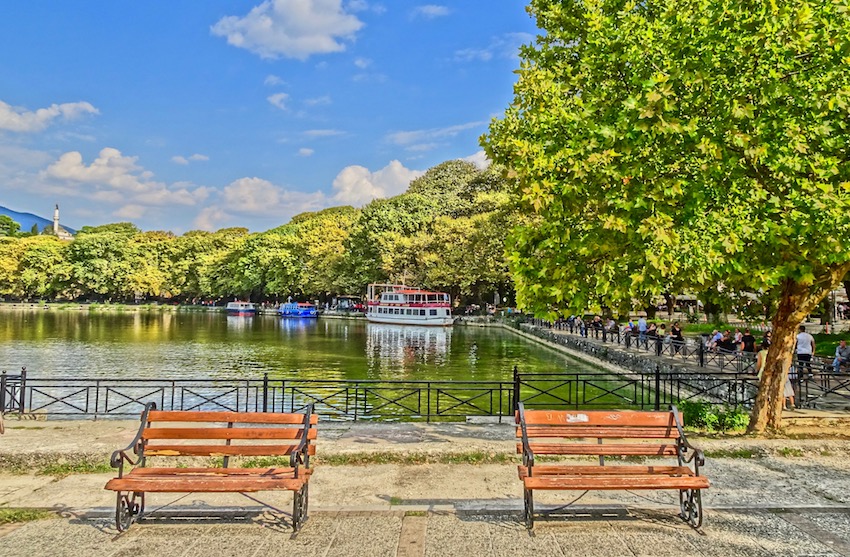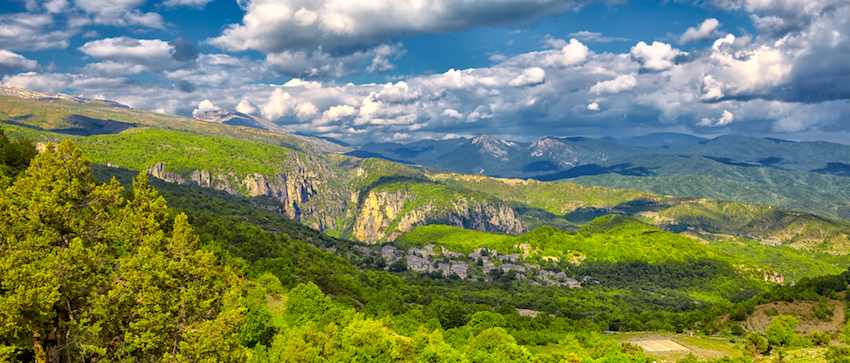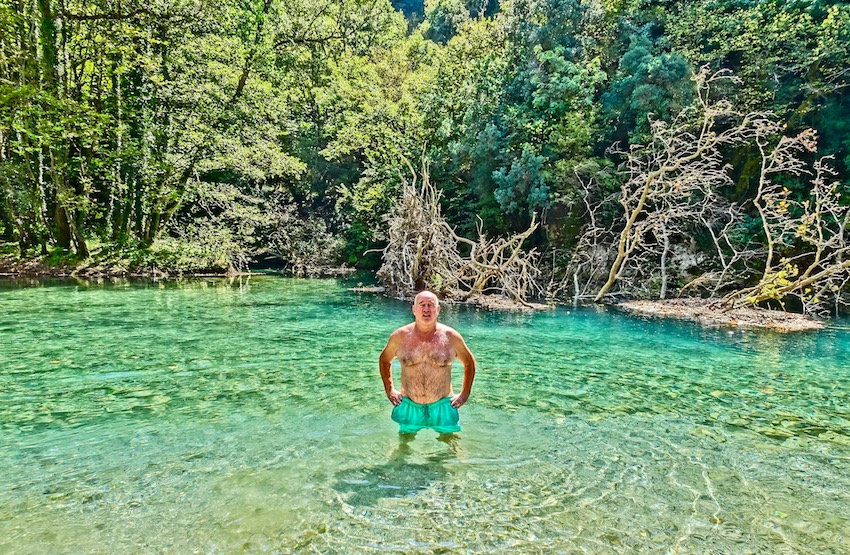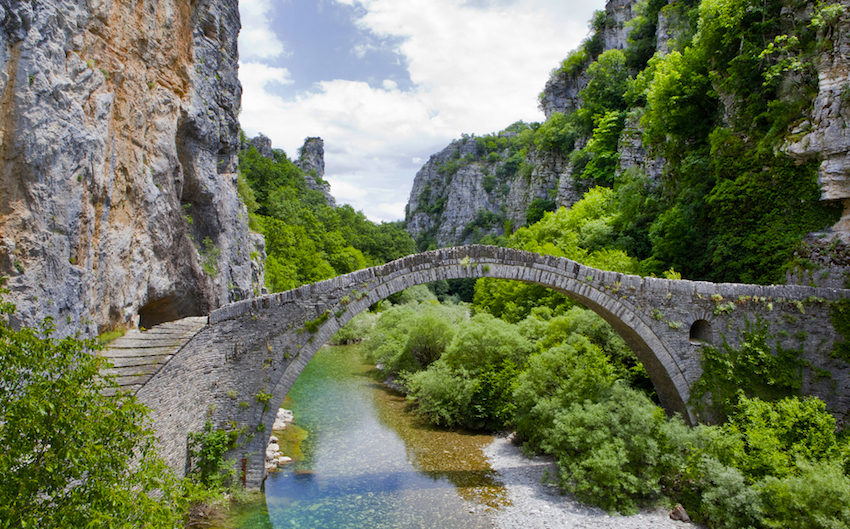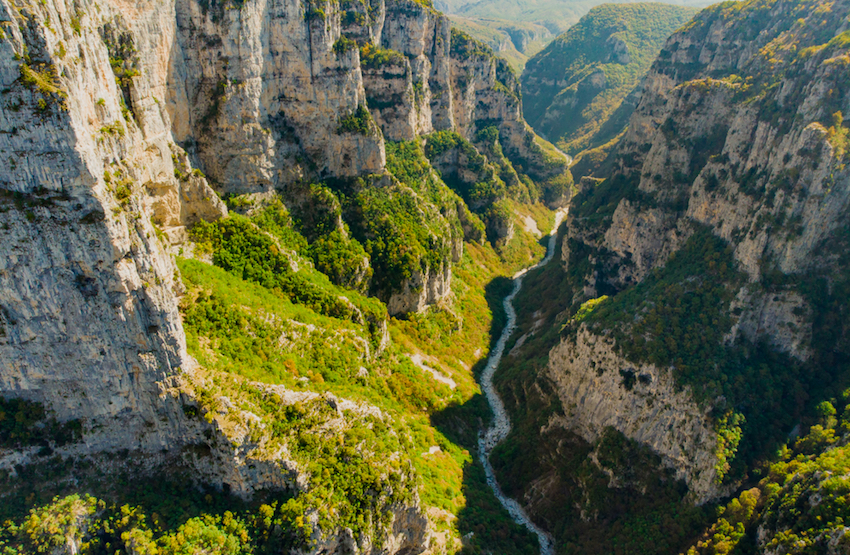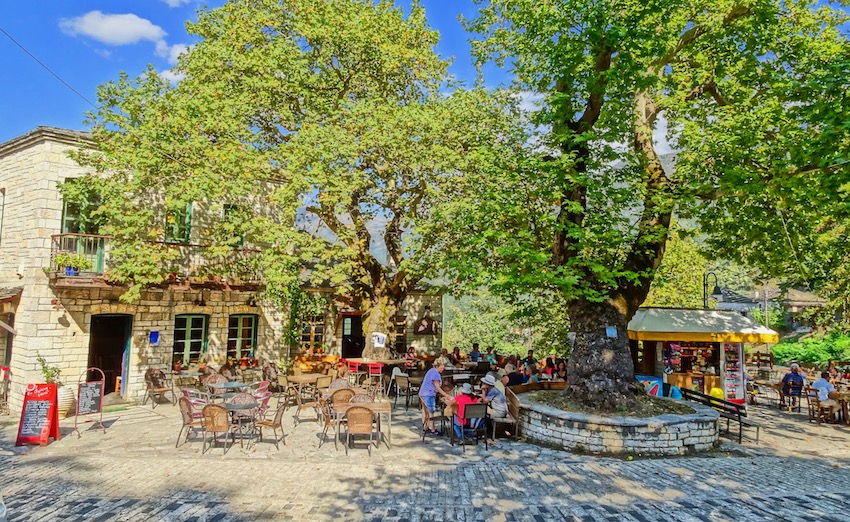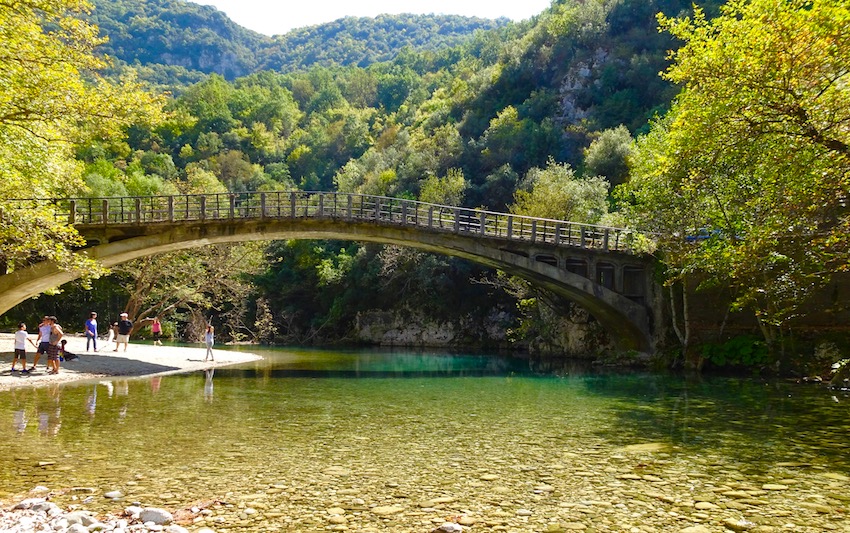
Hiking in Greece
Hiking The Vikos
Gorge
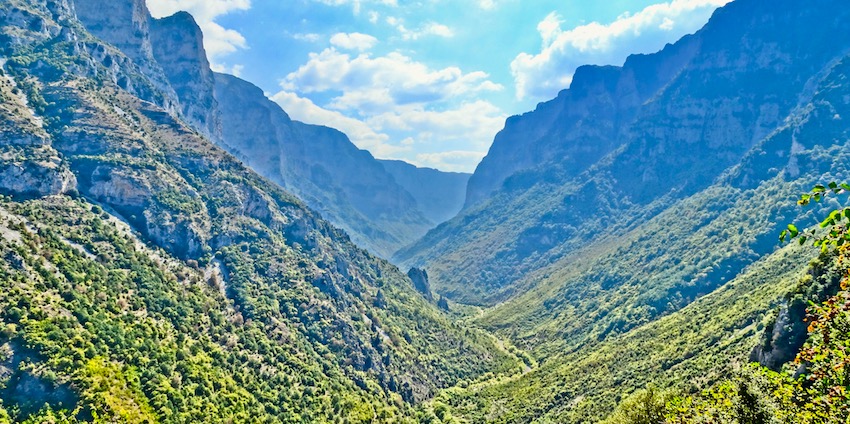
|
The Vikos Gorge lies in the North Pindus Mountains in the historic area of Epirus, 30 odd kilometers north of Ioannina and 24 miles from the Albanian border. The area, called the Zagori, has 44 villages called the Zagorohoria. by Janet McGiffin "Upwards and Downwards, One and the Same"--Heraclitus In the 6th century BC, the philosopher Heraclitus said, "A road is, upwards and downwards, one and the same."
Those who have hiked the Vikos Gorge will say this description fits perfectly. Even with the varied terrain and
vistas, anywhere one walks or points a camera is the same wild beauty, changing and not changing season after season. |
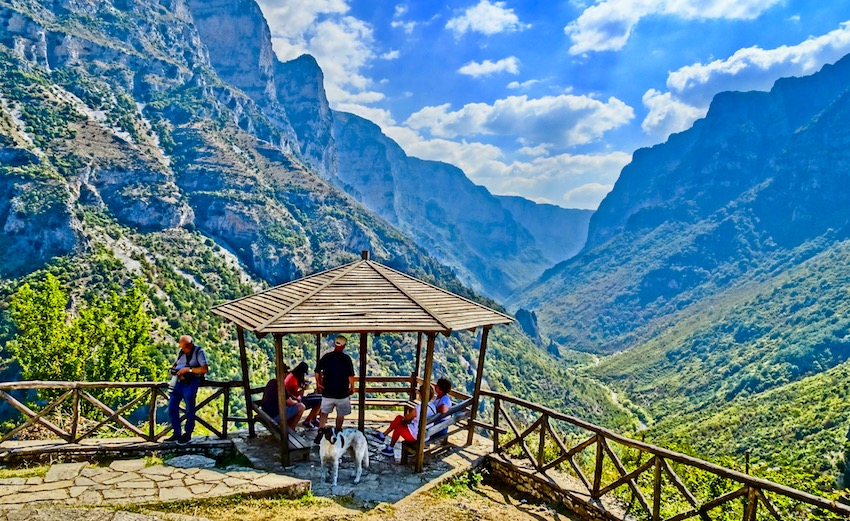 |
|
But for hikers, the Vikos Gorge comes first because of its beautiful interconnecting footpaths of many levels of
expertise that link stone villages tucked into folds of mountains. And a cool breeze that drifts through the tree-shaded
Vikos gorge makes it possible to hike all summer, even when the rest of Greece is baking under blazing August sun.
By the end of August, the Vikos Gorge is already tasting the crisp nights of autumn and the maples, beech, fig,
and oak trees along Greek National Trail #03 that follows the Vaidomatis River through the gorge are ablaze with
color. |
|
|
|
Part of the pleasure of hiking the gorge comes from the long journey to get there. A car trip from Athens to Ioannina
takes seven hours with an advised overnight in Ioannina to enjoy this lakeside town with its Ottoman-flavored bazaar
and inexpensive eateries rimming the lake. The Archeological Museum is not to be missed as the exquisite displays
of ancient glass and bronze work provide a quick sense of this part of Greece, inhabited for six thousand years.
During the Roman and Byzantine eras, the road to Rome from Constantinople, the "Egnatia," ran through
Ioannina and today the new East-West highway, the Egnatia Odos, follows much the same route. See Matt's Ioannina Page. |
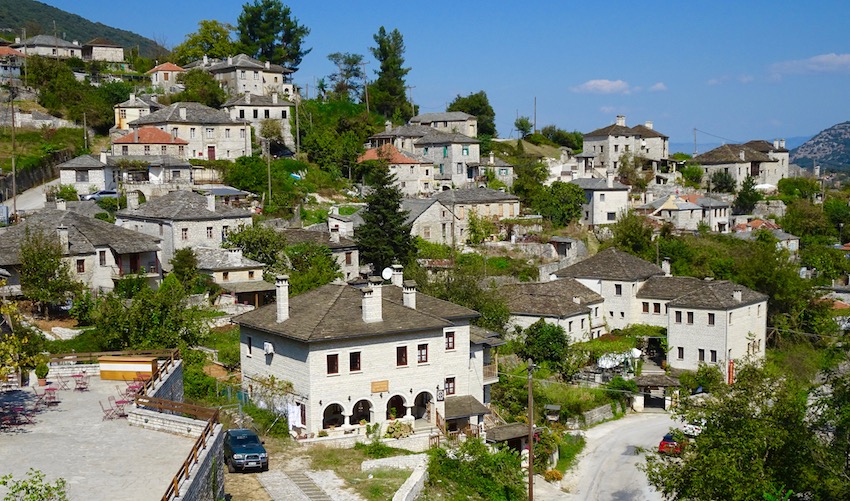 |
|
After Ioannina, it's only 16 kilometers to the first villages of the Zagori. The mountain road is steep, narrow,
and winding. Local drivers tear around hairpin curves leaving little space for oncoming traffic. On one recent
journey, a helicopter was picking a bicyclist out of a canyon-a miscalculation of brakes and curve. By bus from Athens, the journey requires calculation to connect with the smaller buses to the Zagori. Long-distance
(KTEL) buses leave Athens Bus Terminal A (Kifissou Street) nearly every hour starting at 6 am.
The trip is approximately seven hours with a spectacular crossing of the new bridge at Rio. Buses can be packed
with Albanians making bus connections in Ioannina for the Albanian border so arrive at the station early if you
need to make a connecting bus to the Zagori. Two bus services leave Ioannina for the Zagori. One goes to Monodendri and villages near the south end of the gorge, leaving Ioannina at 6:15 and 4:15 pm. The second goes to Mikro Papingo and Megalo Papingo and the villages near the north end of the gorge, Monday, Wednesday and Friday at 5:15 am and 2:30 pm. The village of Monodendri, on the rim of the gorge near the south end, is a good spot for those who want to hike
the entire gorge as well as view the famous stone arched bridges over the river below the gorge. It's a restored
stone village of walled stone courtyards with fortress-like gates. New construction matches the old architecture.
Other short hikes out of Monodendri are suitable for hikers not eager to handle the vigorous gorge hike. Nearby
Vitsa is also good for hiking the gorge, although it's a distance to reach the entrance to the gorge. The villages of Mikro Papingo and Megalo Papingo, at the north end of the gorge, are better suited for hikers who want to hike the gorge as well as east into the Gamilla range. |
|
|
Hikes around Monodendri besides the gorge
|
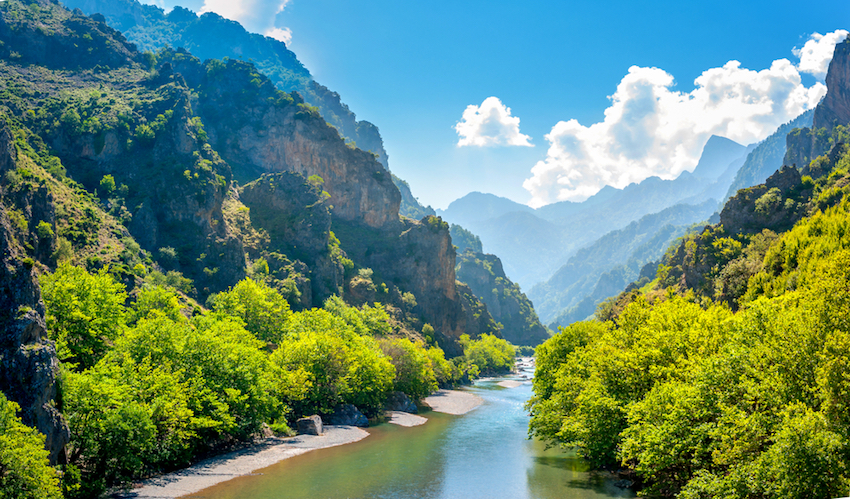 |
Monodendri to Vikos or Papingo: Hiking the Gorge
|
|
|
Papingo to the Panagia shrine at the springs.
|
|
|
Monodendri to Kipi: the 18th Century Stone Bridges
|
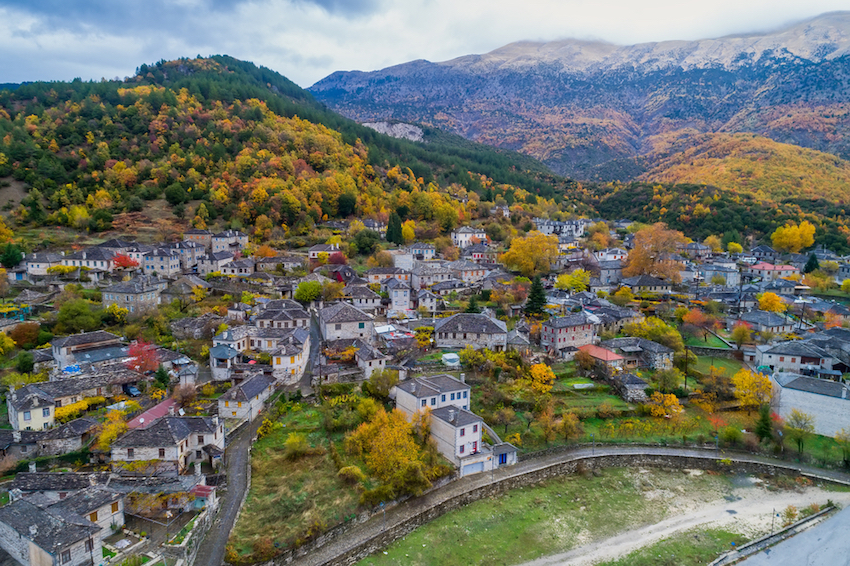 |
Papingo to points East
|
|
|
Logistics: Getting from here to there
|
|
|
Your Dining Pleasure
|
|
|
Foreign hikers predominate
|
|
Janet McGiffin lives in Athens partly because it is so easy to travel to anywhere from Greece. She is a writer of mystery novels and travel articles. She also writes grant proposals for non-profit organizations (NGO) based around the Mediterranean. Currently she is public-education publicist for a 24-partner European Union cultural project involving conservation of ancient monuments. You can e-mail her at janmcgiffin@yahoo.com |
Help Support Matt's Greece Travel Guides
Do you enjoy using my site? Have you found it entertaining as well as useful? If so please show your appreciation by booking hotels through the travel agencies and the links found on my Greek Travel Agents Page. The small commission I make on the bookings
enable me to keep working
and in most cases you won't find them any cheaper by searching elsewhere. You can also book at Booking.com's Zagohoria Pages and they give me a small percentage on each booking. If you have any questions feel free to E-mail Matt. If you are appreciative of all the free information
you get on my websites you can send a donation through Paypal
